|
|
At present, the technology of domestic brand new energy has realized the curve overtakingThe new energy market is growing rapidly. In August 2022, the wholesale number of passenger car market, new energy models 630,000, a year-on-year growth of 104%, a month-on-month growth of 12%. The wholesale volume of fuel vehicles in the same period was 1.47 million, up 21% year on year and down 6.7% month on month.
The market share of new energy models reached a new high of 30%, and the wholesale sales, whether year-on-year or month-on-month, grew far ahead of fuel cars. Behind the doubling of the market share of new energy models, the car companies are indeed a few happy and a few sad. Because the growth of new energy market share is not balanced for independent brands and joint venture brands.
In August, the independent brand new energy wholesale sales of 502,000 vehicles, accounting for 80%, occupying an absolute dominant position in the market, and this advantage is not only in August this year.
If we look at the sales data of new energy in the past three years, the average market share of independent brands is 79%, and they are in an absolute dominant position in the market. In the new energy era, the market pattern of the original fuel vehicle era has been completely overturned, and the transformation from the absolute dominance of joint venture brands to the absolute dominance of independent brands has been completed. In the new energy track, from the perspective of wholesale sales, the independent brand not only overtakes the car, but also rides the dust, and the joint venture brand has been unable to match it.
Behind the magnificent transformation of the market pattern is the Chinese government's strong support for the development of new energy. From special financial subsidies to the exemption of purchase tax, from the launch of the double points policy to the special license plate for new energy, macro-control has gradually transformed China's new energy market from policy-oriented to market-oriented. After more than ten years of accumulation, new energy vehicles burst out today. If we take a look at the market share of new energy models in the past three years, we can find that it has doubled every year from 6% in 2020 and 16% in 2021 to 30% now. Government support for new energy into a lot of resources, two major changes brought their own brands, to summarize is now independent brand two advantages: the main electrical technology route of product price advantage is the two big advantages contributed to their own brands in the reversal of traditional joint brand new energy markets, then we respectively introduce the two advantages. The first advantage: main power technical route advantage. Before talking about the advantages of the main power technology route of the independent brand, we first take a look at the rapid growth of the new energy market, the structure of the new energy market is quietly changing. As can be seen from the data, pure electric is still the mainstream of the current new energy market. Moreover, Chinese brand battery, motor, electric control technology and pure electric model supply chain system are also far ahead in the world. But the rapid growth of plug-in hybrids reflects a problem that pure electric has not solved the age-old problem of range anxiety. The slow construction of public charging infrastructure has exacerbated this anxiety. The news of charging the service area for one hour and queuing for four hours in holidays is endless. In Shunyi District of Beijing, new energy owners even queue up at 4 am to charge their cars, because they can't get in line if they go late. So after years of development, the new energy market is becoming more mature, and consumers' choices are becoming more rational. Mature consumers are increasingly starting from their own needs, and plug-in hybrid models with zero anxiety of battery life are increasingly favored. This is the reason why the proportion of plug-in hybrid models has increased significantly. In the hybrid market, Toyota and Honda have a first-mover advantage. Toyota started the research and development of hybrid power as early as 1969 and registered a large number of patents, especially for core technologies such as planetary gear, which directly established the patent technical barrier of THS strong hybrid. The later entrants had to bypass Toyota's patent barrier through other technical routes. Honda also has a long history of hybrid development, more than 25 years. The fourth generation i-MMD was introduced this year. Different from the previous generations, the fourth generation adopts the idea of double motors and innovatively designs a set of multi-parallel shaft comprehensive transmission device to solve the pain points of the previous generations of single motors. However, despite their first-mover advantage, Toyota and Honda are now surrounded by their own brands in the Chinese market, where they have been deeply entrenched. The independent brands represented by Great Wall Intelligent DHT, Chery Kunpeng Hybrid, Geely Raytheon Hybrid, Chang 'an Blue Whale Hybrid, and BYD DM-i are all internationally leading in technology. Toyota THS, Honda i-MMD, Great Wall Intelligent DHT, Chery Kunpeng, Geely Raygod, Changan Blue Whale, and BYD DM-i have a total of 7 kinds, which are dazzling just by looking at the names, not to mention that each family has its own promotion of 3 gears, 9 gears, 11 modes, planetary gears, double planetary gears and other advanced technologies. So as an average consumer, how do you decide which one is better? Today I'll give you the simplest way, which is to see whether the power is dominant or the fuel is dominant. Plug-in hybrid models That's a result, but the starting point for getting there is different. Some brands are based on fuel as the starting point, increase the power system to achieve low fuel consumption; Some brands are based on electricity as a starting point, adding fuel systems to increase endurance and power. Although the two lead in the same direction, the actual experience is very different.
The vehicle is equipped with a generator, which can be driven by the engine to generate electricity for use by the vehicle. At this time, waiting for the car to go far depends on how big the tank is, pure electric model range anxiety is solved. In fact, this technology is not new. In December 1900, Ferdinand Porsche showed off his Lohner Porsche, which had an extended range powertrain. Extender solves the range anxiety problem of pure electric, but its disadvantages are also obvious. The mechanical energy of the engine is converted into electrical energy, which is converted into mechanical energy again, and with each conversion comes a loss of energy. Although the engine could be kept at its most efficient RPM to generate electricity, it could theoretically be more fuel efficient. But the real car test effect, with pure fuel car fuel consumption is basically equivalent. The engine carried by the extended-range model increases the load, but the engine only generates electricity and does not participate in providing power. When strong power output is needed, it can only rely on the motor, and the load of the engine at this time has become the burden of acceleration. In other words, consumers can experience the strong power and excellent NVH effect of pure electric models, but they cannot enjoy the low energy consumption of pure electric models. If a tram uses 10 fuel per 100 km, why not just burn it? The long-desired solution to the pain points of the first generation extenders is simple. Second generation: Great Wall's smart DHT technology and BYD's DM-i, representing models Latte DHT-PHEV and BYD Song PLUS.
The second advantage: price advantage of self-owned brands The advantage of self-owned brands in China is that they can buy models with higher configuration and technology content at the same price. In the same price, the power performance, battery power and quality assurance, pure electric range and intelligent driving configuration of Chinese self-owned brand models are better than those of the same level. Due to space limitation, the self-owned brand only takes Latte DHT-PHEV as an example to compare the plug-in hybrid models of two mainstream joint venture brands from the three dimensions of power performance, battery and intelligent driving to show the price advantages of the self-owned brand products.
The best of these features is backtracking, which records the last 50 meters of travel. After putting into reverse gear, the system automatically controls the steering wheel, brake and gas pedal, and automatically follows the original recorded route back. Good news for drivers with poor backing skills. Very friendly for backing up on narrow roads. Write in the last new energy era wave, the horn of the rise of independent brands has sounded. China's own brand main power technology route and product price two advantages highlighted, the future can be expected. The door to the ecological remodeling of the automobile industry has been opened. Let us witness the rise and fall of each brand in this era. |




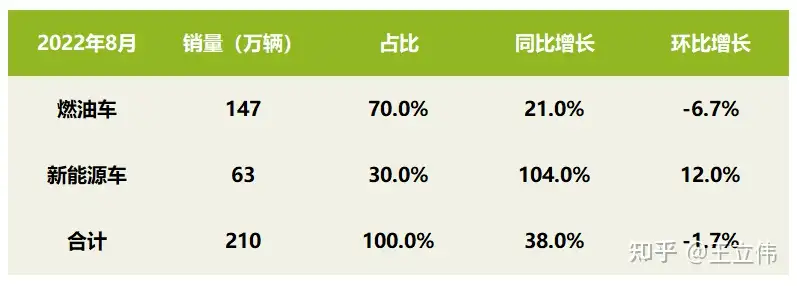


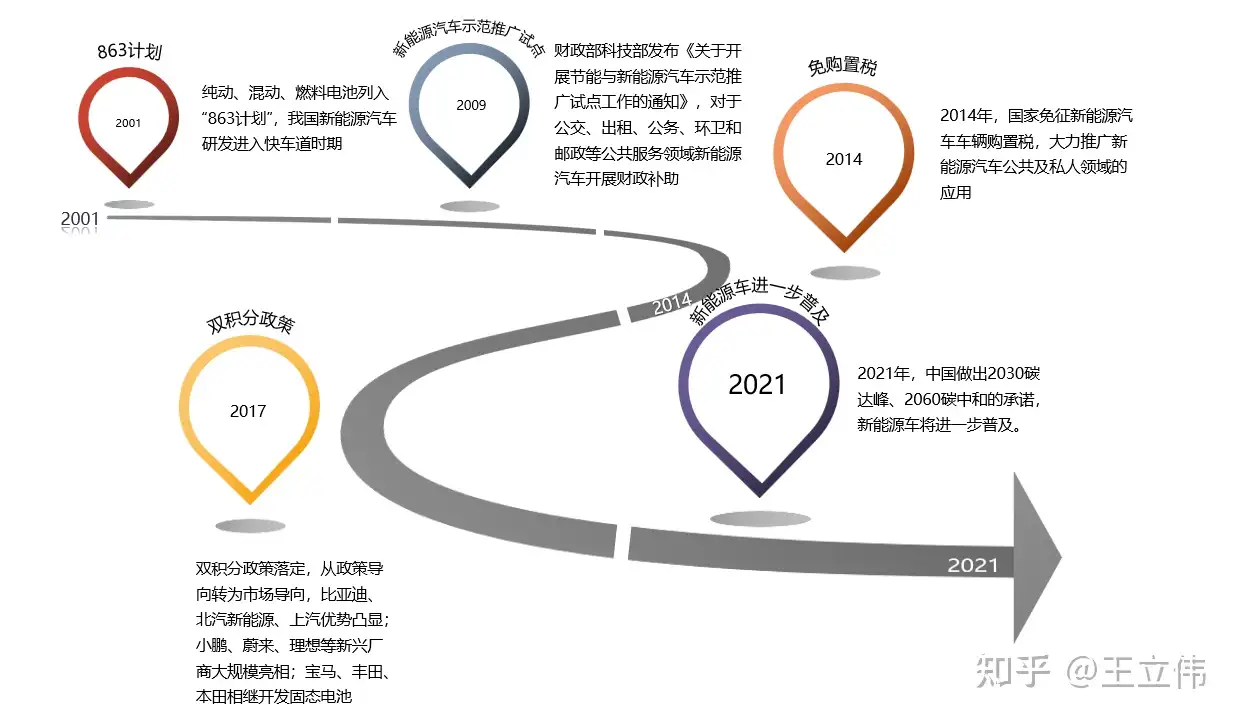
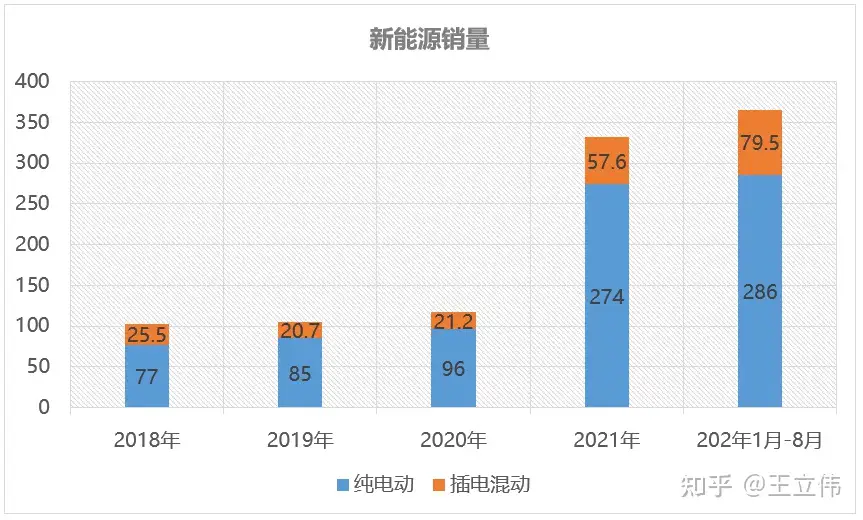 Under the rapid growth of new energy vehicle sales, the market structure of new energy vehicles is also undergoing obvious changes: both pure electric models and plug-in hybrid models are growing at a high speed, but the growth range of plug-in hybrid models is significantly higher than that of pure electric models.
Under the rapid growth of new energy vehicle sales, the market structure of new energy vehicles is also undergoing obvious changes: both pure electric models and plug-in hybrid models are growing at a high speed, but the growth range of plug-in hybrid models is significantly higher than that of pure electric models.
 From the above figure, we can clearly see that in combination with the comprehensive evaluation of motor power, battery capacity, pure electric range and whether it can be connected in series, only BYD DM-i and Great Wall Intelligent DHT are plug-in hybrid electric vehicles dominated by electric drive, and the existence of fuel system is to increase cruise and power. The rest are hybrid modifications to reduce fuel consumption, essentially electrification of fuel cars. In the new energy era, the technology of electrification tinkering based on fuel vehicles is destined to be eliminated from the market and will not be discussed here today. As mentioned above, the original intention of consumers to choose plug-in hybrid electric vehicles is to solve range anxiety and achieve a car experience with zero anxiety. Next, we will discuss how BYD DM-i and Great Wall Intelligent DHT, which are dominated by electricity, solve the range problem. First generation solution: Add-on. Representative models include Huawei's M5, Ideal ONE and many other models.
From the above figure, we can clearly see that in combination with the comprehensive evaluation of motor power, battery capacity, pure electric range and whether it can be connected in series, only BYD DM-i and Great Wall Intelligent DHT are plug-in hybrid electric vehicles dominated by electric drive, and the existence of fuel system is to increase cruise and power. The rest are hybrid modifications to reduce fuel consumption, essentially electrification of fuel cars. In the new energy era, the technology of electrification tinkering based on fuel vehicles is destined to be eliminated from the market and will not be discussed here today. As mentioned above, the original intention of consumers to choose plug-in hybrid electric vehicles is to solve range anxiety and achieve a car experience with zero anxiety. Next, we will discuss how BYD DM-i and Great Wall Intelligent DHT, which are dominated by electricity, solve the range problem. First generation solution: Add-on. Representative models include Huawei's M5, Ideal ONE and many other models.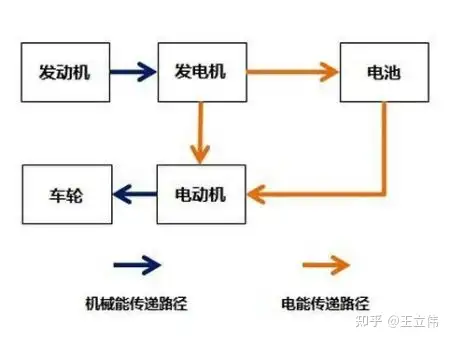
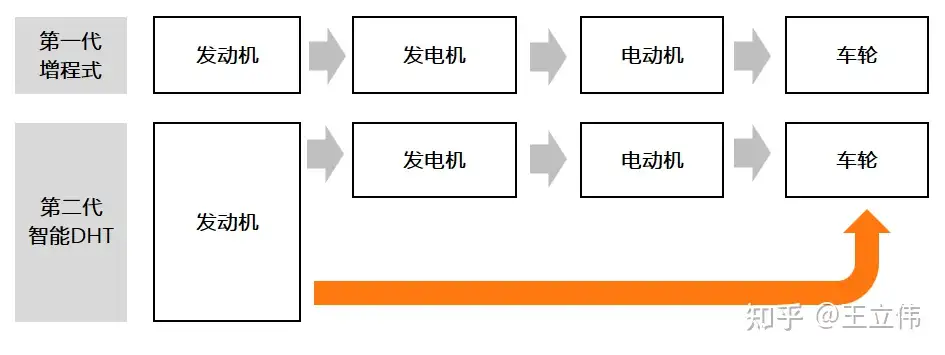 The principle is very simple. On the basis of the first generation, a gearbox is added to realize the parallel connection between the transmitter and the motor. The engine can provide power directly to drive the car. Here, the Great Wall intelligent DHT and BYD DM-i are different. Byd DM-i gearbox has only one gear, and the driving condition range covered by the engine is small when it is driven directly. The Great Wall DHT can provide high and low gears to achieve the best power or fuel consumption performance under different conditions. Acceleration stage: THE engine provides power through low gear and electric motor to achieve the best dynamic performance of the car and give the best acceleration performance. High speed cruise stage: the engine provides power directly through high gear, avoiding the energy loss caused by the conversion between mechanical energy and electric energy, and achieving lower fuel consumption. Great Wall intelligent DHT through two gear drive, to solve the problem of BYD DM-i high-speed power shortage and high fuel consumption. Therefore, we can see that among the 7 different hybrid technology routes of Toyota THS, Honda i-MMD, Great Wall Intelligent DHT, Chery Kunpeng, Geely Raygod, Changan Blue Whale, and BYD DM-i, the Great Wall 2 direct drive DHT has the highest technology content and is the most suitable technology route for Chinese consumers. At the same time, we also see the determination of the independent brand to realize the overtaking of the track through deep cultivation technology. Take the real car as an example, the latte DHT-PHEV four-wheel-drive extra-large cup, 0-100km/h acceleration time 5.2 seconds, WLTC comprehensive operating condition fuel consumption 0.73 liters 100km. It can be said that both strong power, and 100 kilometers less than 1 oil of extremely low fuel consumption. The 0.73L fuel consumption is measured when the battery is charged, so if the battery is losing power, will the fuel consumption increase?
The principle is very simple. On the basis of the first generation, a gearbox is added to realize the parallel connection between the transmitter and the motor. The engine can provide power directly to drive the car. Here, the Great Wall intelligent DHT and BYD DM-i are different. Byd DM-i gearbox has only one gear, and the driving condition range covered by the engine is small when it is driven directly. The Great Wall DHT can provide high and low gears to achieve the best power or fuel consumption performance under different conditions. Acceleration stage: THE engine provides power through low gear and electric motor to achieve the best dynamic performance of the car and give the best acceleration performance. High speed cruise stage: the engine provides power directly through high gear, avoiding the energy loss caused by the conversion between mechanical energy and electric energy, and achieving lower fuel consumption. Great Wall intelligent DHT through two gear drive, to solve the problem of BYD DM-i high-speed power shortage and high fuel consumption. Therefore, we can see that among the 7 different hybrid technology routes of Toyota THS, Honda i-MMD, Great Wall Intelligent DHT, Chery Kunpeng, Geely Raygod, Changan Blue Whale, and BYD DM-i, the Great Wall 2 direct drive DHT has the highest technology content and is the most suitable technology route for Chinese consumers. At the same time, we also see the determination of the independent brand to realize the overtaking of the track through deep cultivation technology. Take the real car as an example, the latte DHT-PHEV four-wheel-drive extra-large cup, 0-100km/h acceleration time 5.2 seconds, WLTC comprehensive operating condition fuel consumption 0.73 liters 100km. It can be said that both strong power, and 100 kilometers less than 1 oil of extremely low fuel consumption. The 0.73L fuel consumption is measured when the battery is charged, so if the battery is losing power, will the fuel consumption increase?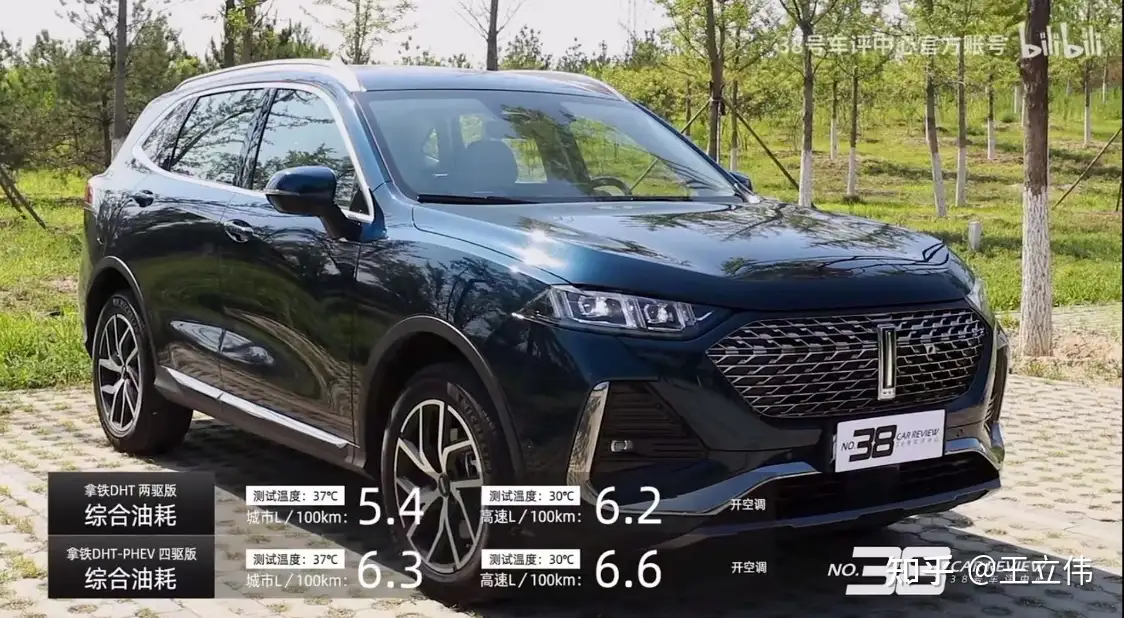 The measured data of No.38 is the urban road condition of 6.3L and the height of the road condition of 6.6L. The test environment is Beijing summer, and the whole process is fully air-conditioned. The fuel consumption of UP main fat dragon pig in Station B will be lower. Under the condition of power deficit (3%), it takes 5 hours and 40 minutes, travels 206.2 kilometers, the average speed is 37km/h, and the measured average fuel consumption is 5.7L per 100 kilometers. This at least means that if we drive deliberately in a more fuel-efficient manner, this car (the Latte DHT-PHEV all-wheel-drive Venti) can achieve a fuel economy of 5.7L with no power. The Latte direct-drive Smart DHT technology achieves a previously unimaginable energy performance: hybrid models are more fuel efficient than pure fuel when they lose power. Of course, this is a PHEV model, which can be charged with 34 degrees of power and has a pure electric range of 155 kilometers (WLTC). If the charging pile is used to charge the car, the daily commute can be completely pure electric driving without any fuel consumption. In the case of power and power loss, the fuel consumption is even lower than that of pure fuel, which is the huge advantage of the two-speed direct drive intelligent DHT technology. Great Wall Motor, which developed this technology, can be called an example of its own brand deep ploughing technology to achieve hard overtaking on the track.
The measured data of No.38 is the urban road condition of 6.3L and the height of the road condition of 6.6L. The test environment is Beijing summer, and the whole process is fully air-conditioned. The fuel consumption of UP main fat dragon pig in Station B will be lower. Under the condition of power deficit (3%), it takes 5 hours and 40 minutes, travels 206.2 kilometers, the average speed is 37km/h, and the measured average fuel consumption is 5.7L per 100 kilometers. This at least means that if we drive deliberately in a more fuel-efficient manner, this car (the Latte DHT-PHEV all-wheel-drive Venti) can achieve a fuel economy of 5.7L with no power. The Latte direct-drive Smart DHT technology achieves a previously unimaginable energy performance: hybrid models are more fuel efficient than pure fuel when they lose power. Of course, this is a PHEV model, which can be charged with 34 degrees of power and has a pure electric range of 155 kilometers (WLTC). If the charging pile is used to charge the car, the daily commute can be completely pure electric driving without any fuel consumption. In the case of power and power loss, the fuel consumption is even lower than that of pure fuel, which is the huge advantage of the two-speed direct drive intelligent DHT technology. Great Wall Motor, which developed this technology, can be called an example of its own brand deep ploughing technology to achieve hard overtaking on the track. In terms of dynamic performance, the latte has higher technical content and better dynamic performance due to the addition of two-stage direct drive intelligent DHT technology. In 5.2 seconds, it's the fastest in its class.
In terms of dynamic performance, the latte has higher technical content and better dynamic performance due to the addition of two-stage direct drive intelligent DHT technology. In 5.2 seconds, it's the fastest in its class. The driving range of electric tram and pure electric car that new energy owners care most about, the lattes are also better than the models of the same level, with the longest pure electric range of 155km, and the warranty policy of electric car is more attractive.
The driving range of electric tram and pure electric car that new energy owners care most about, the lattes are also better than the models of the same level, with the longest pure electric range of 155km, and the warranty policy of electric car is more attractive.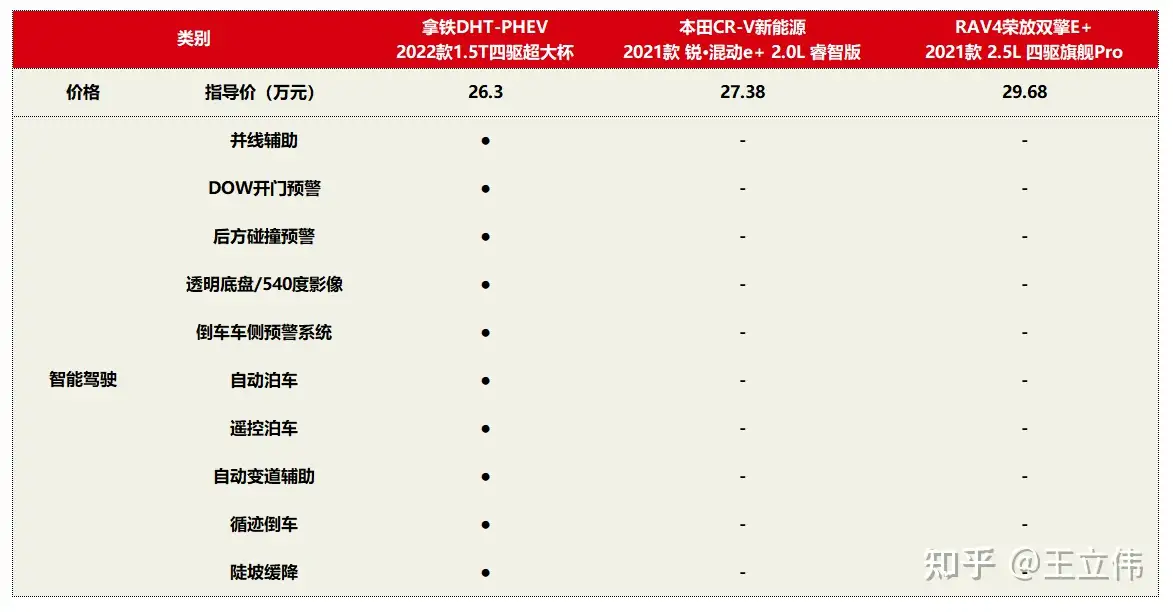 The relevant configuration of intelligent driving: Latte DHT-PHEV directly fills up, and the application scenarios cover parking, urban road driving, night driving, high-speed driving, etc., all of which can bring more convenient travel experience to drivers.
The relevant configuration of intelligent driving: Latte DHT-PHEV directly fills up, and the application scenarios cover parking, urban road driving, night driving, high-speed driving, etc., all of which can bring more convenient travel experience to drivers.